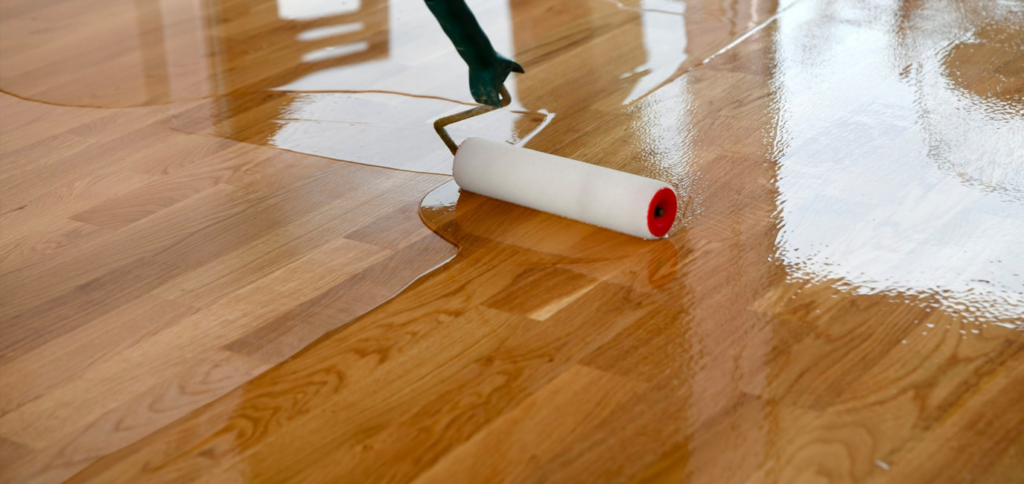This is undoubtedly the most famous inquiry we get about our different finishing services. The solution to this question relies on the variables that mean quite a bit to you.
Factors to take in count
There are five imperative characteristics to assess.
– Dry Times: How long does the wrap-up take to dry? This will manage when the floor can be strolled on with socked feet or when another coat can be connected.
– Cure Times: How long does it take the finish to completely chemically respond and reach full hardness or effectiveness? This will direct when region floor coverings can return and when we propose continuing full activity (pets, etc.).
– VOC content: Most finishes transmit unstable natural compound gases as they finish drying and curing. It can be harmful to be wrapped up in higher-VOC substances if you do not have the correct respiratory hardware. In case you arrange to remain at home amid the wrapping-up preparation, you may unquestionably need to utilize a wrap-up with a moo VOC rating.
– Durability and wearability: Toughness is difficult to measure. The tabor scraped spot test is regularly utilized to measure hardness, but this test can be deluding.
– Ease of Maintenance: One of the foremost important factors is the frequency at which upkeep coats have to be connected and what this process entails.
Single-Component Finishes
Single-component finishes are oxygen-crosslinked, meaning they don’t require a second component for curing. They are usually a water-based solution.
One advantage of one-component systems is that they have a quicker drying time. They get done and regularly dry in, like, two hours. This makes them helpful for fast undertakings. Likewise, they are very effortless since they don’t have to blend parts; they simply apply straightforwardly. That is why they are reasonable for most private applications.
One consideration to keep in mind is durability. While they’re decently durable, they may not withstand heavy commercial traffic as effectively. Single-component finishes offer less chemical and scuff resistance compared to two-component options. The last one is that the application is straightforward, but it might not be the best choice for high-traffic areas.

Two-Component Finishes
Two-part finishes contain lower levels of solvents compared to other finishes, assisting with following severe VOC (volatile organic compounds) guidelines pointed toward lessening dissolvable emanations.
Two-part finishes are generally used in different businesses, like office furniture, kitchen cabinetry, and more modest expert shops. They give sturdiness, settling on them as a favored decision for applications that require strong and enduring completions. To guarantee the quality and sturdiness of two-part finishing, industry principles, for example, the Kitchen Cupboard Maker’s Affiliation (KCMA) Testing Norms, are utilized to assess the ampleness of the completion and the application interaction.
A few notable two-components dominate the industry:
– Catalyzed finishes
– Two-part polyurethane
– Crosslinking a water-based finish
Catalyzed finishes
Some advantages are that they are excellent at heat, wear, dissolvability, corrosiveness, and antacid resistance. They offer uncommon toughness and insurance against different kinds of harm. Also, these finishes are exceptionally impervious to water and dampness, making them appropriate for use in kitchens, restrooms, and different conditions with high mugginess. An important thing is that they dry quickly, taking into consideration the speedier finishing of tasks and lessening the holding time between coats. Contrasted with numerous different completions, catalyzed finishes contain less dissolvable, assisting with consenting to stricter VOC.
Two-part polyurethane
The advantage of using polyurethane finishes is that they offer superb protection from wear, scratches, synthetic compounds, and dampness. They provide a sturdy defensive layer that can endure weighty use and unforgiving circumstances. These completions frequently give a gleaming and clear appearance, improving the normal excellence of the wood. They can create a smooth and impeccable surface that enhances the wood’s grain and variety. Likewise, two-section polyurethane commonly has great protection from bright (UV) light, which forestalls a variety of blurring and wood staining brought about by delayed sun openness. This makes them reasonable for both indoor and open-air applications.
Another benefit is that once the sap and hardener are blended, two-section polyurethane completes the fix generally rapidly, diminishing the holding time among coats and taking into consideration quicker project culmination. Then again, they display astounding protection from solvents, acids, salts, and lots of synthetic substances. They can endure spills and substance openness without staining or harm, making them ideal for kitchen and restroom surfaces.

Crosslinking water-based finish
Crosslinking water-based finishes have arisen as a famous option in contrast to conventional dissolvable-based finishes because of their low VOC (unpredictable natural compound) content and ecological disposition. These finishes use advanced polymer innovation to create areas of strength for a connected organization inside the covering, bringing about improved solidity and execution. They are normally utilized in different applications, including furniture, cabinetry, and decks.

